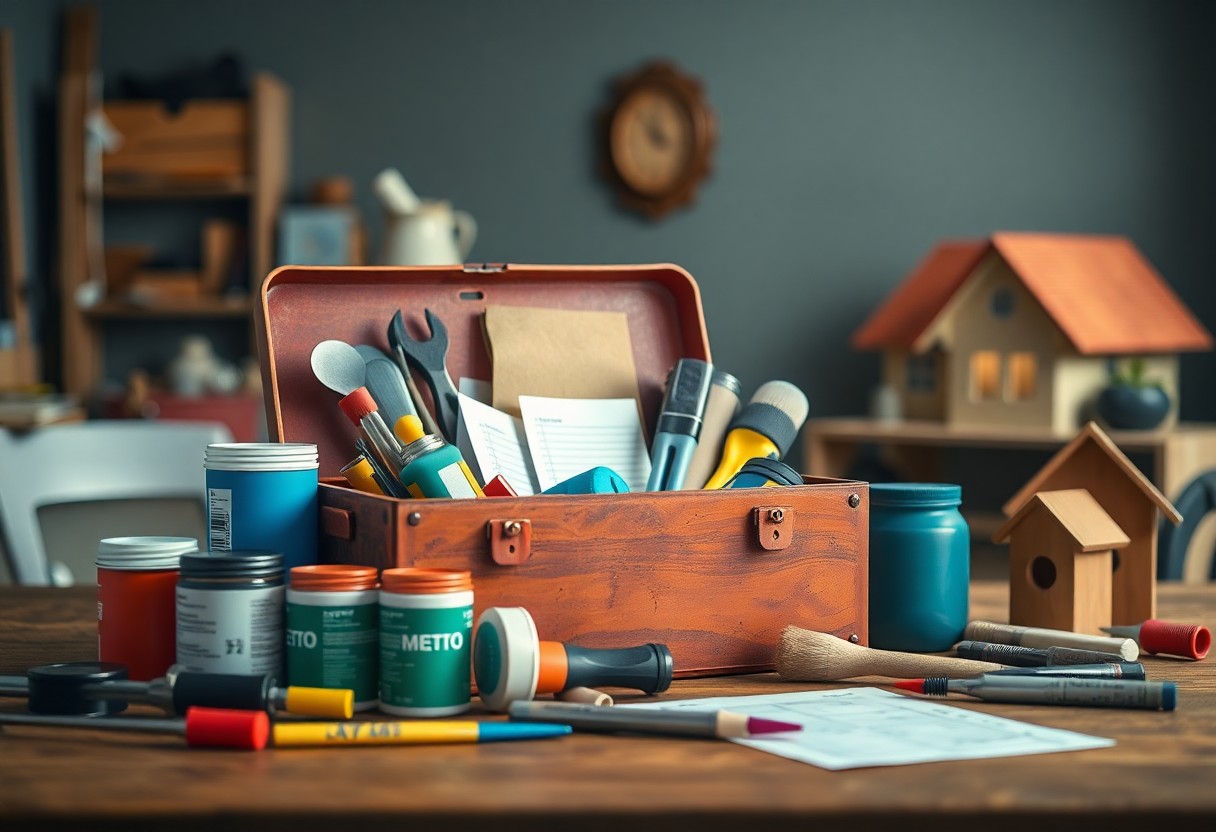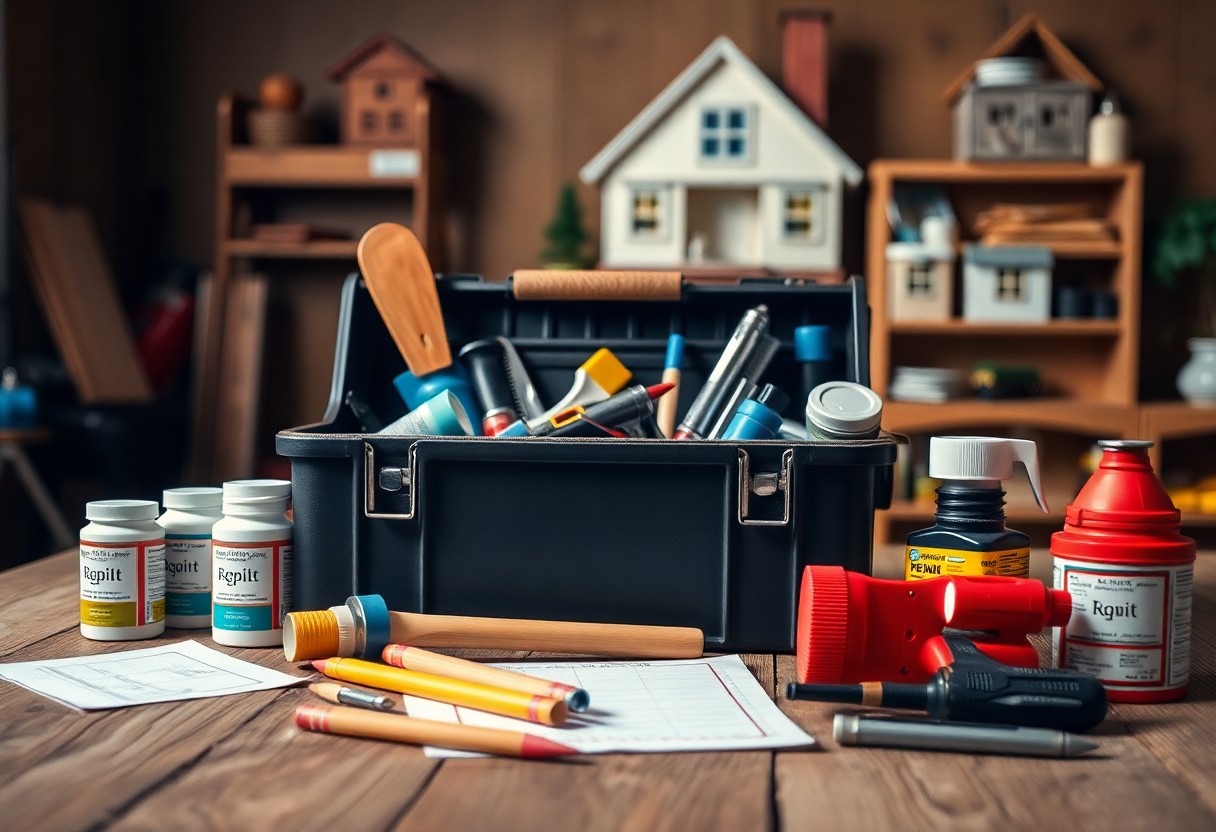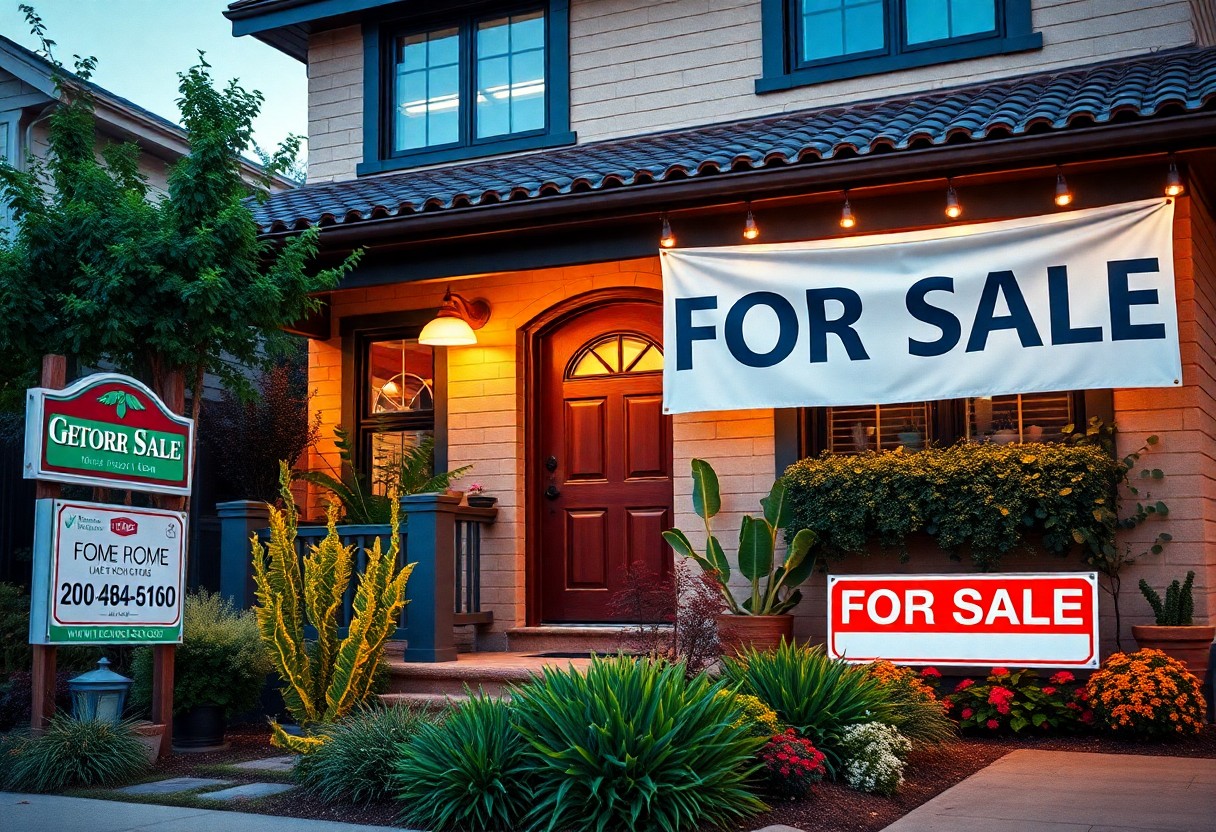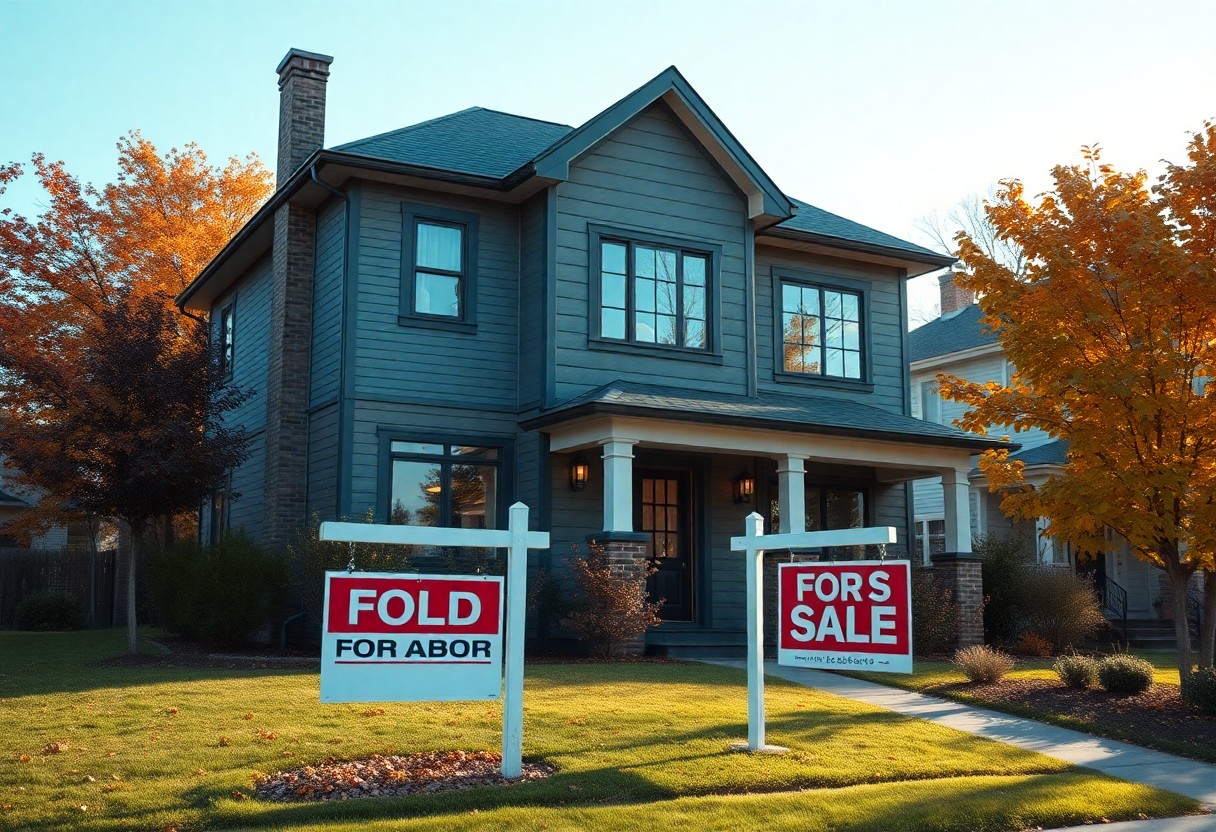Just before you list your home on the market, it’s imperative to address any repairs that could impact its value and appeal. Taking the time to fix minor issues can significantly enhance your home’s overall impression and attract more potential buyers. In this checklist, you’ll find practical steps to tackle repairs, from

Key Takeaways:
- Assess the overall condition of your home to identify areas that need repair or improvement.
- Prioritize repairs that can significantly impact the home’s value, such as fixing structural issues or updating outdated features.
- Address any plumbing or electrical problems, as these can be major turn-offs for potential buyers.
- Enhance curb appeal by focusing on landscaping, exterior paint, and the condition of the front door.
- Consider a professional inspection to uncover hidden issues that may not be visible to the average homeowner.
- Keep maintenance records handy to show prospective buyers that the home has been well cared for.
- Ensure all repairs are completed before listing the home, as this can lead to faster sales and better offers.
Understanding the Importance of Repairs
A selling home in its best condition significantly affects its marketability and selling price. By addressing necessary repairs in advance, you not only enhance the aesthetic appeal but also reassure potential buyers that they won’t encounter unexpected issues after the sale. This proactive approach can lead to quicker sales and higher offers, ultimately benefiting your bottom line.
How to Assess Needed Repairs
You can begin assessing necessary repairs by conducting a thorough walk-through of your home. Take note of any visible issues, such as peeling paint, leaky faucets, or damaged flooring. Additionally, consider hiring a professional home inspector to identify hidden problems that may not be immediately apparent but could impact your sale.
Tips for Prioritizing Repairs
One effective way to prioritize repairs is to categorize them based on their impact on your home’s value and safety. Focus on the following:
- Essential Repairs – Issues that could impact buyer safety or require immediate attention.
- Aesthetic Repairs – Improvements that enhance your home’s visual appeal without being crucial.
- Market Trends – Repairs that align with buyer expectations in your local market.
Perceiving these categories can guide you in making informed decisions that pay off when selling your home.
For instance, if your home requires both a new roof and a fresh coat of paint, it’s vital to prioritize the roof as it’s a matter of structural safety and could discourage buyers. Address the small cosmetic touches later, improving the market presence. Follow these guidelines:
- Urgency of Repairs – Address safety or functionality issues first.
- Cost vs. Value – Evaluate repairs that yield the maximum return on investment.
- Timeframe – Consider how long repairs will take and their impact on your selling timeline.
Perceiving the significance of prioritizing repairs helps create a strategy that ensures a smoother selling experience.
### How To Make Necessary Repairs Before Selling – A Homeowner’s Checklist
1. Inspect all rooms for visible damage or wear.
2. Fix leaky faucets and running toilets immediately.
3. Patch holes in walls and repaint if needed.
4. Check electrical systems; replace faulty switches or outlets.
5. Examine roof and gutters; repair any leaks.
6. Enhance curb appeal with landscaping and fresh paint.
Key Repairs to Consider
Any homeowner looking to sell must prioritize necessary repairs that not only enhance the appeal of their property but also ensure that it meets safety standards. Focus on key areas, such as the roof, plumbing, and electrical systems, as well as cosmetic fixes that can influence buyer perception. By being proactive and addressing these issues, you can make your home more appealing, potentially increasing its resale value and speeding up the sale process.
How to Evaluate the Exterior
Exterior assessments are important to catch potential problems before selling your home. Begin by inspecting the roof for missing shingles and ensuring gutters are clear. Check for cracks in the foundation and fading exterior paint. Ensure your landscaping is well-maintained, as a tidy yard can significantly enhance curb appeal. Look for any visible signs of water damage or wear on windows and doors that may need attention.
Tips for Interior Fixes
On the inside, small fixes can have a large impact on how potential buyers perceive your home. Begin by addressing any noticeable leaks or water damage. Ensure walls are freshly painted with neutral tones to appeal to a broader audience. Consider updating outdated light fixtures and ensuring all appliances are in working order. Simple adjustments can include:
- Fixing leaky faucets
- Patching up holes in walls
- Replacing damaged flooring
Recognizing these areas early on can save you time and trouble later in the selling process.
Interior fixes serve to elevate your home’s perception and can often be completed without extensive renovations. Tackle any visible cracks or damages to your walls and floors first. Check bathrooms and kitchens for any necessary repairs to fixtures or cabinetry. This time spent getting your home in order can translate to a smoother sale, as buyers typically appreciate well-maintained spaces. Common tips include:
- Deep cleaning carpets and upholstery
- Organizing closets and storage areas
- Replacing or cleaning blinds and curtains
Recognizing the importance of interior fixes will help with presenting your home in the best possible light.
Preparing for Inspections
Despite the stress that inspections can bring, thorough preparation can ease the process significantly. Ensuring that your home is in top condition not only enhances its appeal but also boosts buyer confidence. Proactively addressing issues before they arise during an inspection can save you time, money, and reduce the risk of deals falling through.
How to Conduct a Pre-Listing Inspection
Any homeowner can benefit from a pre-listing inspection as it helps identify potential problems before showing your property. Hire a qualified inspector to examine your home thoroughly and provide a detailed report. This will allow you to address issues in advance, thereby increasing the value of your property and making it more attractive to potential buyers.
Factors to Consider for a Smooth Process
Clearly, several factors can impact your inspection experience. Planning ahead will help streamline the process for both you and prospective buyers. Focus on the following elements:
- Timing: Choose a suitable time for the inspection.
- Accessibility: Ensure all areas are accessible, including attics and basements.
- Cleaning: Maintain a clean and decluttered environment.
- Documentation: Have maintenance records ready for review.
Assume that taking these steps will contribute greatly to a smoother inspection process.
Additionally, keeping in mind the possible concerns during the inspection can help you prepare even better. Understanding what buyers typically look for can give you an advantage:
- Structural Issues: Look for cracks or signs of water damage.
- Electrical Systems: Ensure all wiring is safe and functional.
- HVAC Condition: Verify that heating and cooling systems are working properly.
- Pest Infestations: Check for signs of rodents or insects.
To make your inspection as successful as possible, consider hiring professionals to assist with addressing major concerns. Assume that prioritizing these elements can lead to a more favorable outcome in your selling process.

Enhancing Curb Appeal
Not only does enhancing curb appeal improve your home’s first impression, but it also increases its value. Consider making simple upgrades like a fresh coat of paint, new house numbers, or even minor repairs to fixtures. For more tips, check out 11 Repairs to Make Before Selling Your Home.
How to Improve First Impressions
One of the best ways to enhance first impressions is by ensuring your entryway is welcoming. Clean and tidy the front porch, add decorative elements like potted plants or a new welcome mat, and ensure your front door is painted and inviting. All these small efforts contribute significantly to how prospective buyers perceive your home.
Tips for Landscaping and Exterior Staging
Appeal plays a vital role in attracting potential buyers. Start with basic landscaping tasks, such as:
- Trimming overgrown hedges
- Planting colorful flowers
- Adding fresh mulch to garden beds
- Ensuring a well-manicured lawn
Thou shall also consider minor staging tips to make your outdoor space look more inviting.
Impressions can be lasting, and an updated exterior can significantly increase the marketability of your home. By focusing on your landscaping and staging efforts, you ensure your home stands out. Here are a few more ideas:
- Maintaining clean driveways and walkways
- Using outdoor lighting to highlight features
- Adding outdoor furniture for inviting spaces
- Enhancing fencing or gates for landscaping unity
Thou will find these enhancements can transform your property’s overall aesthetic.
Budgeting for Repairs
Unlike other home improvement projects, budgeting for repairs before selling your home requires a clear understanding of what needs to be addressed to attract buyers. Start by assessing both vital and cosmetic fixes, as this will help you create a realistic budget. Allocate funds for unexpected issues and prioritize repairs that will deliver the best return on investment. This strategic budgeting ensures that you don’t overspend while still effectively enhancing your home’s value.
How to Estimate Repair Costs
Clearly, estimating repair costs is vital for accurate budgeting. Begin by researching the average costs for each repair in your area. Consult local contractors for quotes, and consider utilizing online resources to gauge material prices. By compiling estimates, you can make informed decisions about which repairs are feasible within your budget.
Tips for Staying on Budget
Budgeting can be overwhelming, but staying on track is achievable with a few strategic tips. Prioritize your repairs based on their impact and costs, and keep track of your spending throughout the process. Consider breaking down larger projects into smaller phases to avoid overspending at once. Additionally, it’s wise to set aside a small contingency fund for unforeseen expenses. Here are some recommendations:
- Set a clear budget and stick to it.
- Obtain multiple quotes for repairs to ensure you get the best deal.
- Consider DIY for minor repairs to save costs.
Thou will find that by implementing these strategies, you can effectively manage your expenses while enhancing your home’s appeal.
This budgeting strategy allows you to carry out necessary repairs without going over your financial limit. By being mindful of your expenditures, you can make informed decisions that do not compromise vital work. You should track your expenses diligently and adjust your plans as needed. This promotes effective control over your spending during the repair process. Here are some additional suggestions:
- Be flexible with timelines to take advantage of sales and discounts.
- Purchase materials in bulk for larger projects to save money.
- Focus on high-impact areas like kitchens and bathrooms for the best return on investment.
Thou will soon realize that being proactive with your budgeting can lead to a successful and profitable sale of your home.
DIY vs. Hiring Professionals
After weighing your options, you’ll need to determine whether to take on repairs yourself or hire professionals. DIY projects can save money and allow you to personalize your home, but they may also lead to costly mistakes if you’re not well-versed in home improvement skills. Hiring professionals ensures that the work is done efficiently and to a high standard, but it can increase your overall costs. Your decision should be based on your budget, the complexity of the repairs, and your confidence in completing tasks.
How to Decide on DIY Projects
You may want to consider a few key factors when deciding on DIY projects. Assess your personal skills, available time, and the potential return on investment. Simple tasks, like painting or landscaping, are often manageable, whereas more complex issues, such as electrical repairs or plumbing work, typically warrant professional help. Always evaluate whether a project will add significant value to your home before diving in.
Tips for Finding Reliable Contractors
Contractors can make a significant difference in the quality of repairs in your home. To find reliable professionals, consider the following recommendations:
- Check online reviews and ratings.
- Ask for referrals from friends or family.
- Verify licensing and insurance status.
- Request multiple quotes to compare pricing.
- Review their portfolio of past work.
Knowing these tips can help you select the right contractor for your needs.
Another critical aspect of finding a contractor is communication. You should feel comfortable discussing your project and expectations openly. Make sure to address timelines, payment structures, and any potential challenges upfront. This approach is vital in fostering a trusting relationship and ensuring smooth project execution. Always trust your instincts; if something feels off, explore other options. Knowing you have a reliable contractor can alleviate stress during your home-selling process.
Conclusion
Presently, taking the time to assess and make necessary repairs can enhance your home’s appeal and increase its value before selling. By utilizing the homeowner’s checklist, you can ensure vital areas are addressed, making a positive impression on potential buyers. However, be mindful that not all repairs are worth your investment; for insights on what to avoid, check out Don’t Fix These 7 Things When Selling Your House. This strategic approach will help you sell your home efficiently and effectively.
FAQ
Q: What are the basic repairs I should consider before selling my home?
A: Before selling your home, focus on repairs that enhance curb appeal and functionality. Common repairs include fixing leaky faucets, patching holes in walls, repainting chipped or faded areas, replacing burnt-out light bulbs, and ensuring that all doors and windows operate smoothly. Consider addressing issues that could lead to buyer concerns, such as mold or outdated appliances.
Q: How can I assess which repairs are necessary?
A: Start by conducting a thorough walk-through of your home. Make a list of visible damage or maintenance issues, and consider hiring a professional home inspector for a detailed report. Pay attention to feedback from potential buyers during open houses, and consult with a real estate agent for their insights on what repairs could help sell your home faster or at a better price.
Q: Should I focus on cosmetic repairs or structural repairs?
A: Both cosmetic and structural repairs are important, but prioritizing structural repairs is vital to ensuring the safety and stability of your home. Address major issues like roof leaks, foundation concerns, or electrical problems first. Once these are managed, turn your attention to cosmetic fixes like painting, landscaping, and updating fixtures to improve the overall appeal.
Q: Is it worth investing in professional help for repairs?
A: Depending on the severity of the repairs needed, hiring professionals may be a wise investment. Skilled contractors can address complex repairs that require specialized knowledge, ensuring they are done correctly. This can reduce potential buyer objections and enhance your home’s value. However, for minor repairs, you can save money by completing them yourself if you have the skills.
Q: How can I prepare my home’s exterior for sale?
A: First impressions matter, so concentrate on the exterior. Clean gutters, trim overgrown bushes, and tidy up landscaping. Ensure that the front door is painted or cleaned, and consider adding fresh flowers or potted plants. Additionally, check for any peeling paint or damaged siding, and repair or repaint as necessary to create a welcoming atmosphere.
Q: Are there any repairs I should avoid before selling?
A: While it’s important to address significant issues, avoid over-investing in fixes that may not return the cost at resale. Avoid major renovations that won’t pay off, such as high-end kitchen remodels or extensive yard landscaping that might not appeal to buyers. Instead, focus on repairs that are need-based and generally welcomed, such as painting and minor updates.
Q: How do I prioritize which repairs to tackle first?
A: Start by addressing critical repairs that affect the home’s safety and function, such as plumbing, electrical work, and structural issues. Next, consider repairs that improve aesthetics and appeal, such as painting and replacing outdated fixtures. Create a checklist and budget based on importance and urgency, and focus on repairs that will add value and appeal to your home in the eyes of potential buyers.



